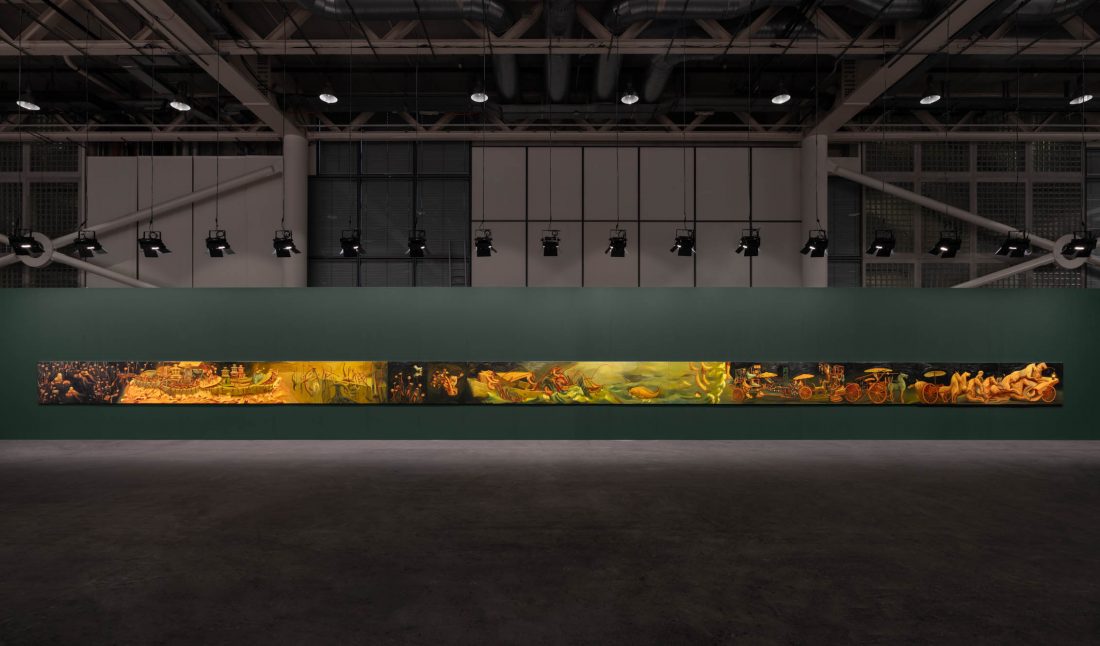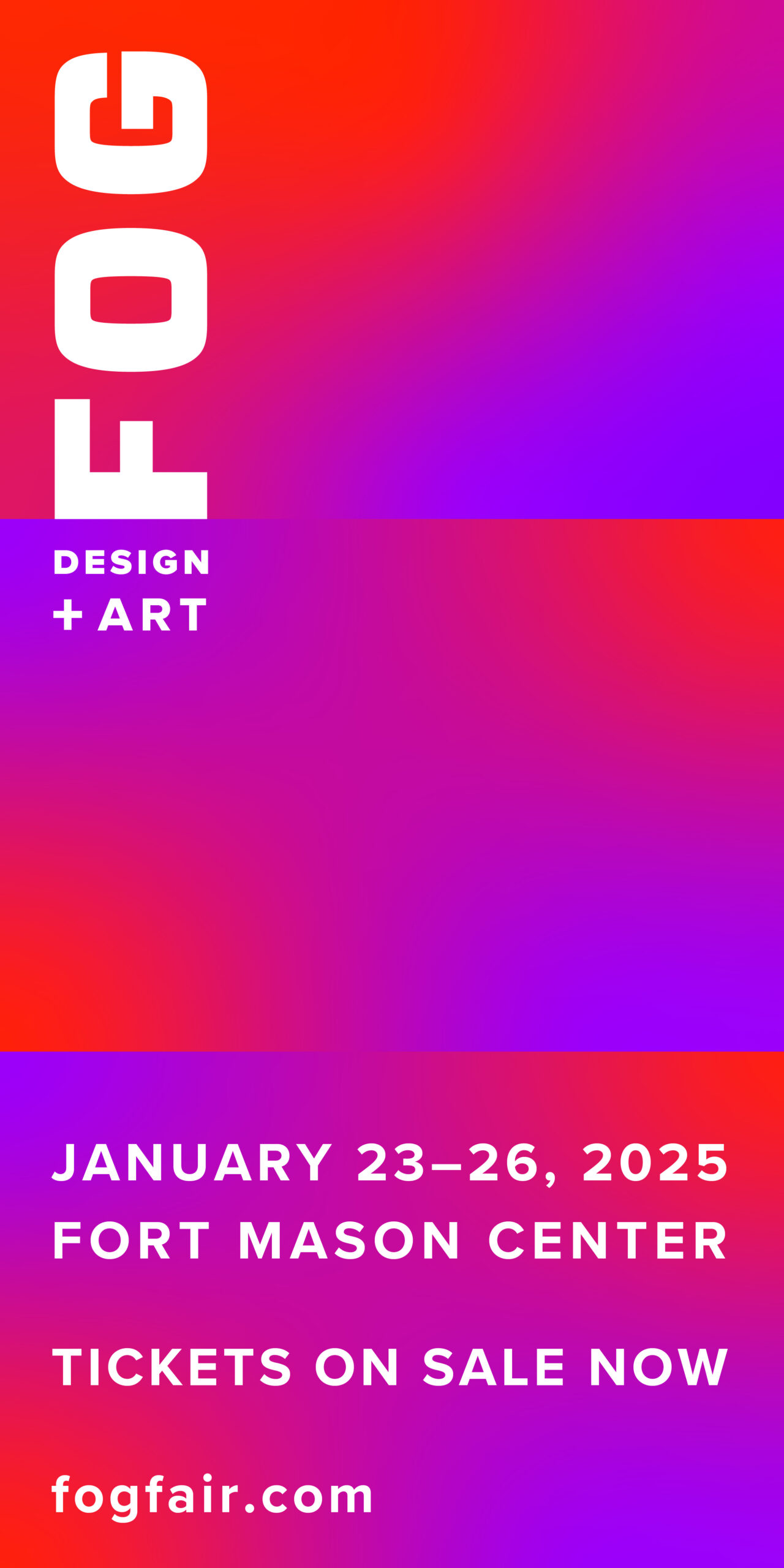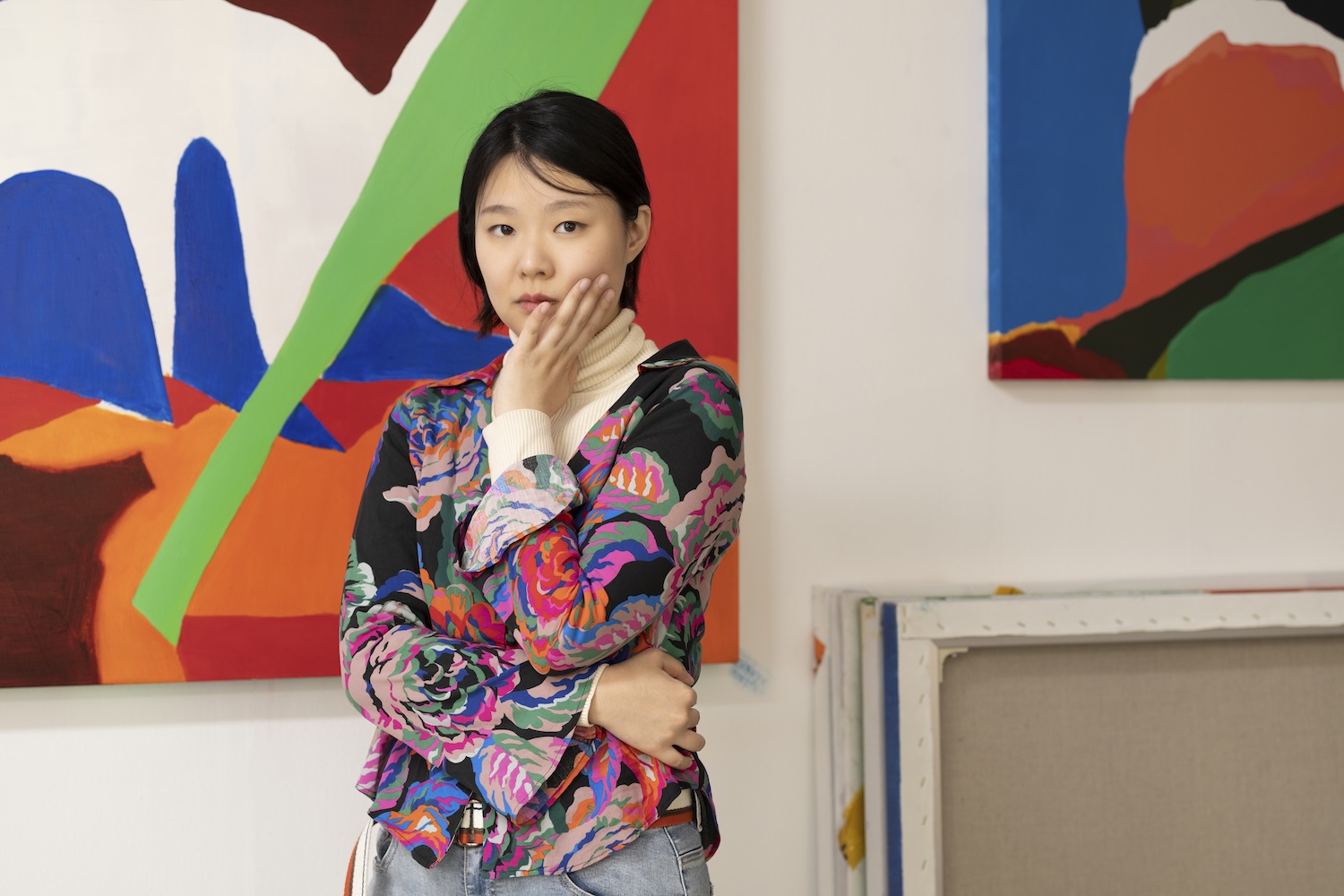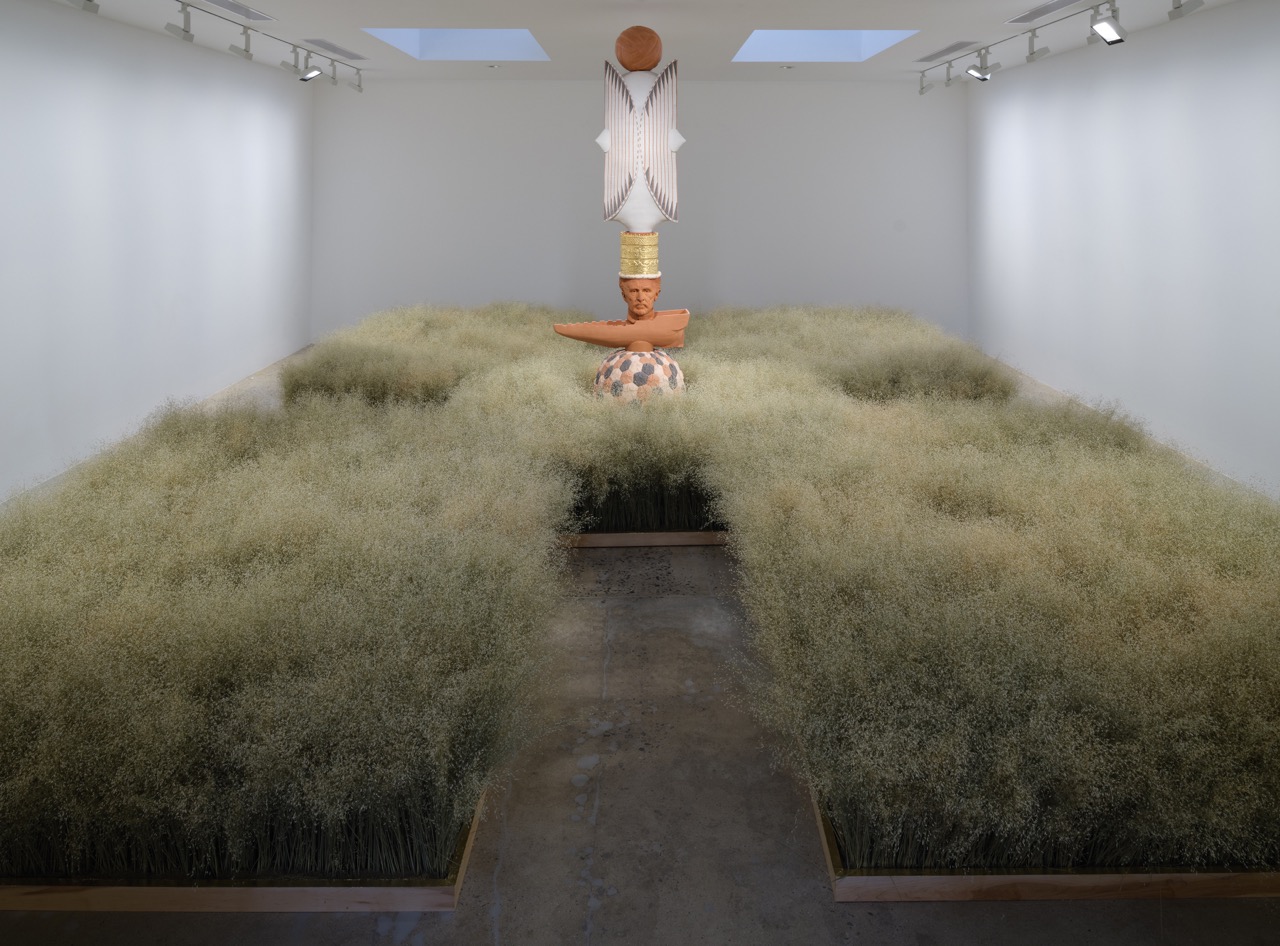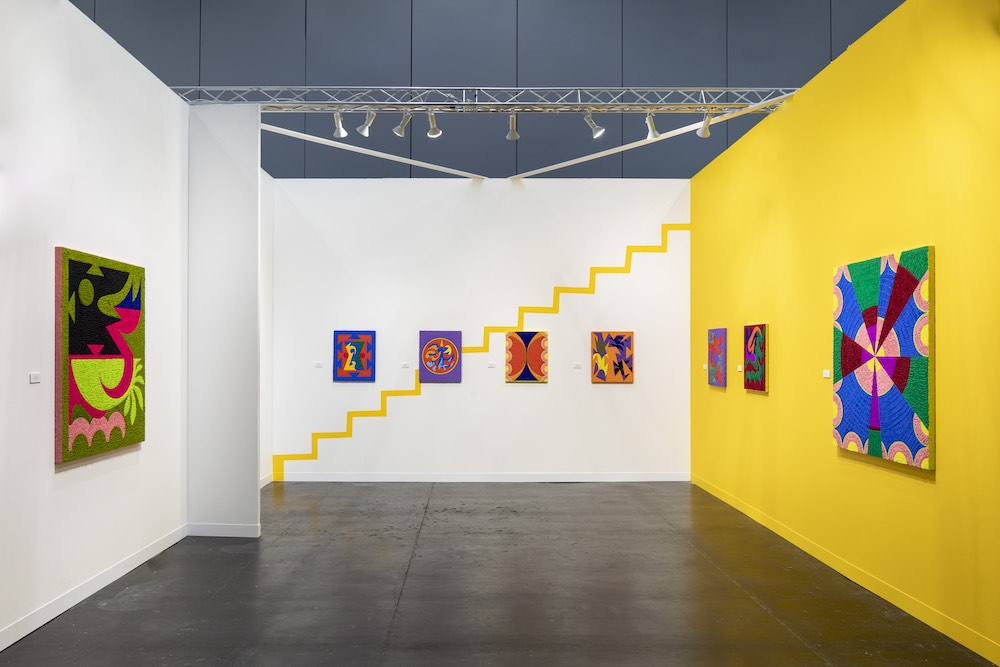Several factors have fueled exponential interest in the painted and sculptural works of the Brooklyn-based fine artist Dominique Fung. First, of course, is her distinct style. Fung’s paintings seem to glow from within, catching the eyes of observers and pulling them into conceptual narratives born of figuration and still life. Second, Fung taps into the power of surrealism to upend stereotypes and traditional depictions of East Asian women. To glimpse her work is to understand that Fung has something meaningful to say.
Born in Ottawa to a family with ancestry in Shanghai and Hong Kong, Fung moved to New York City in 2016 and participated in her first group show one year later. Since then, her work has enveloped art-goers at exhibitions in New York, London, Los Angeles, Shanghai, Bucharest and beyond, along with solo shows at Nicodim Gallery, Jeffrey Deitch, and Massimo De Carlo. Last year, Fung’s art achieved a new level of recognition—adorning walls and vestibules across Rockefeller Center. The centerpiece of the exhibit, entitled A Tale of Ancestral Memories, was one otherworldly, monumental mural stretching 125 feet across vinyl posters along the rink level. Earlier this year, an 88-foot, seven-panel painted version of that mural wowed audiences of Art Basel Unlimited.
In advance of The Armory Show 2024, where Fung exhibited an immersive, sculptural rendition of a Chinese “wet market” with Jeffrey Deitch, Whitewall spoke with the artist about switching between artistic mediums, developing a signature style, and feeling a sense of completion.
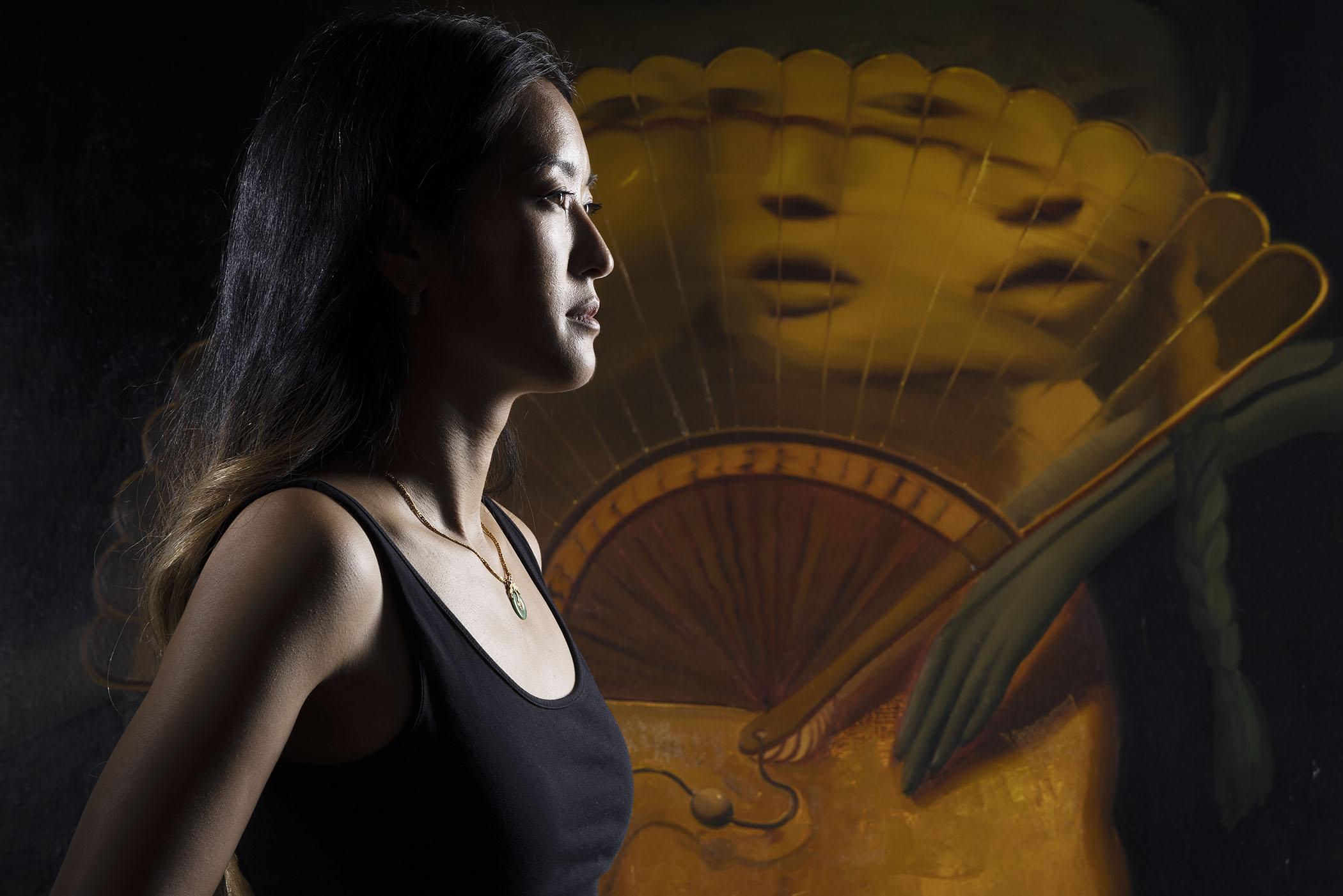 Portrait of Dominique Fung by Steve Benisty.
Portrait of Dominique Fung by Steve Benisty.
WHITEWALL: The storytelling in your work is so distinct. Can you tell us how you began to blend elements of figuration and still life into your compositions to produce a narrative?
DOMINIQUE FUNG: I was painting purely figuration prior to blending objects into my work. When I was painting figures, I wanted those works to have a more encompassing narrative—and yet, for some reason, I kept painting portraits thinking that I could uncover these more expansive conversations. Instead, my work became very narrow.
When I went to The Met for the first time after moving to New York City, I had gone there previously when I had visited New York, but I hadn’t explored wings beyond the Baroque wing or the more classical European paintings and abstract works. After moving here, I spent more time in the East Asian wings, and outside what I thought the institution was trying to tell me. These Tang and Shang dynasty sculptures really resonated with me. These are objects that have been dug up. They’re so old. I began to wonder why nobody was really highlighting them. I spent time looking at them, then I started painting them for curiosity sake. Finally, I thought, “Why don’t I integrate them into my work?” It all developed from there.
WW: You have such a recognizable artistic style, including the way you use color. How did this develop?
DF: Style is a hard thing to describe. Think about the way you write cursive; think about your penmanship. This is part of your personality. It’s hard to change. You could change it, but you’re forcing a different style upon yourself than what you’re naturally inclined to do. That’s how I see how artists make work. It’s their personality rising to the surface. That’s how I arrived to a style. It’s innately me. I loved watching anime when I was younger. I love still life paintings. I love Vermeer. It’s all of this. Your hand is your hand; I believe you don’t really have a choice.
I do think, with color, what I’m constantly trying to achieve in the work is an interior glow. That’s the best way to describe it: this glow from the inside. I tend to mix my pigments so that I can do this, and I tend to use a darker background.
“I do think, with color, what I’m constantly trying to achieve in the work is an interior glow,”
Dominique Fung
WW: You are a New York–based Canadian artist with family ancestry in Hong Kong and Shanghai. All of these elements inform your work. Can you talk about how your identity infuses your artistry?
DF: I love my Chinese culture. I love East Asian art. Growing up in Canada, I felt like these works were very othered. It felt like modern art was the way we were supposed to be making art and all the other types of art were just considered old or antique. There was this belief that we don’t really need to talk about that type of art because we’re here now.
My culture is so important to me that I wanted to bring some of those elements into contemporary painting and sculpture. When I visited Hong Kong for the first time, it was a life-altering experience. I stood in front of this very old tree with long roots extending out everywhere and I felt the history. It impacted me.
“My culture is so important to me that I wanted to bring some of those elements into contemporary painting and sculpture,”
Dominique Fung
WW: Your work continues to shine a light on the objectification of Asian women in pop culture. How are you approaching this?
DF: Not one person can solve this issue. For me, the best way is to show a broad range of what an East Asian woman can be portrayed as. This is why I gravitate toward surrealist scenes. You can pull multiple ideas in, and show a multifaceted person. My issue with a lot of the portrayals of East Asian women has to do with the specificity of being orientalized, or being presented as fragile or soft, or depicted as cunning and evil women.
We’re moving in the right direction—but we need to keep moving. It’s part of my story and this is the easiest way for me to approach it, to use what I know and feel, to put my emotions into the work.
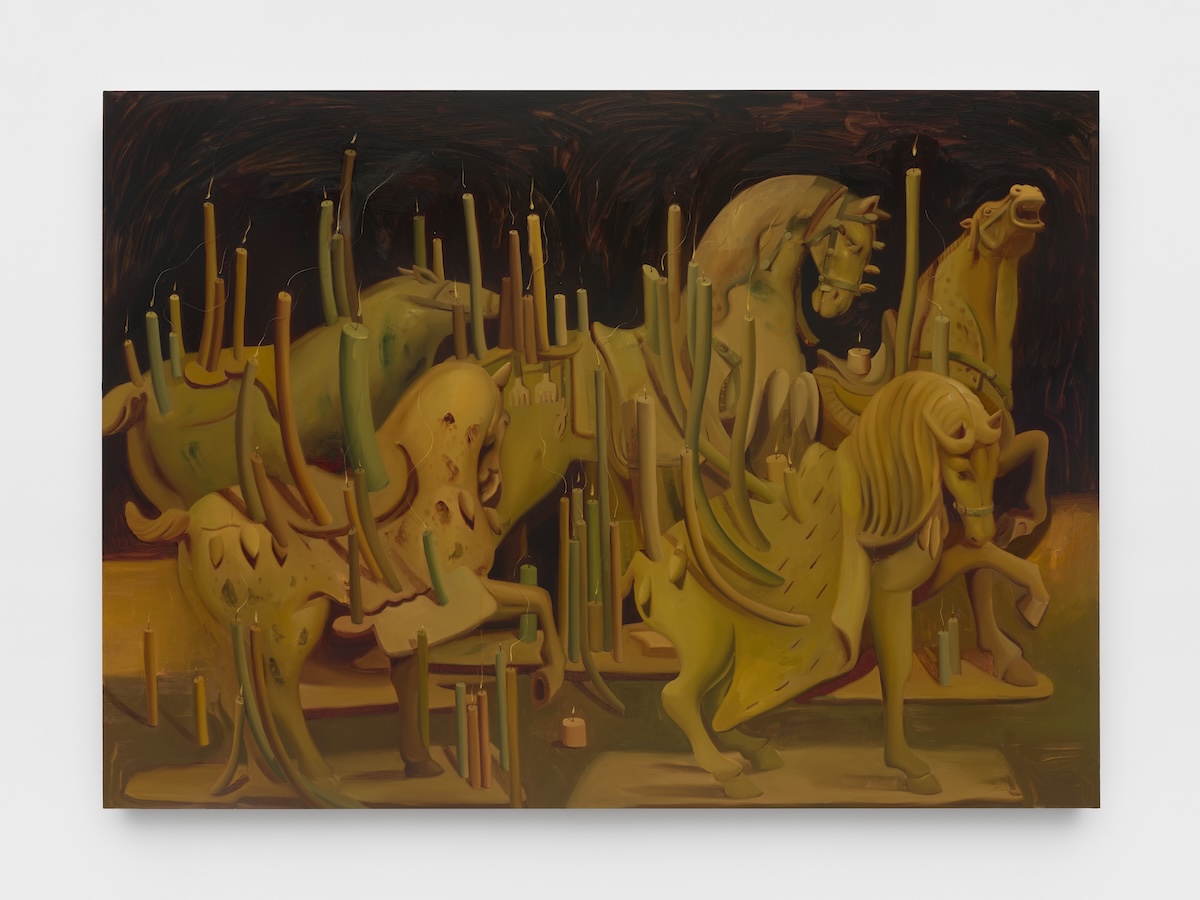 Dominique Fung, “Tang Dynasty Horses as Offering,” 2024, oil on Canvas, 72 x 100 inches, photo by Shark Sanesac, courtesy of the artist and MASSIMODECARLO.
Dominique Fung, “Tang Dynasty Horses as Offering,” 2024, oil on Canvas, 72 x 100 inches, photo by Shark Sanesac, courtesy of the artist and MASSIMODECARLO.
Excavation as an Artistic Process Unfolding at Rockefeller Center
WW: Do you have a narrative vision in mind when you start a work? Where does a piece begin?
DF: I write. I enjoy writing down specific ideas and emotions and thoughts. I also look at a lot of auction catalogs. I like flipping through them. For example, for the Rockefeller Center show I knew I wanted to do something where it was these beings traveling through time, over oceans, seas, lands and stillness. Those were the words I had written down. I knew that was the framework that I would build this piece from. I slowly found objects. It’s a process that I call excavation. I fancy myself—maybe I was in another life—as an archaeologist. I dig up these objects and try to piece them together in this long picture to convey my feelings.
WW: For your Rockefeller Center exhibition, how did you translate your thoughts and feelings into a 125-foot-long mural?
DF: I pieced it all together. I made the baseline sketch and then I projected it onto sections. It began as a painting, which did not fit in my studio. My studio is not 88 feet long. I had to work on five panels at a time, then I should shift them over and try to align it all. At Art Basel in Switzerland, in the Unlimited section, was the first time I saw it as one painting. At Rockefeller Center, the work was presented on vinyl posters.
WW: How did this exhibition originate?
DF: They commissioned me via email and I thought it was spam. I remember seeing it—opening it and then closing it. I didn’t think anything of it. My friend reached out. She had done it previously. She told me that Art Production Fund had reached out to me and that I should read my email. I remember going through my email again and finally responding.
WW: How did it feel to see your work in this setting?
DF: I usually feel overwhelmed when I see one of my own exhibitions and it takes me a while to process what I’ve created. The first time seeing it altogether, I think, “Oh, these actually look kind of good outside of my studio.” It takes me a little bit of time to be like, “These are great paintings.”
With Rockefeller, however, it was different. The space is historic and grand. There are these marble columns. All of these important people have moved through this public space. You see families walking through it. It was such a special project. I stood there looking at people looking at my work. There were some who knew what it was, and who I was, and there were some kids climbing on it. They didn’t care. That was awesome.
It was my first public art project. We installed it in the middle of the night—it was a twelve-hour install. I stayed up with two of my assistants. We were roaming Rockefeller Center at two a.m. It was really a magical experience. It was ours for the night. It was us and the night guard. He came over to chat and showed me his sketchbook.
“I usually feel overwhelmed when I see one of my own exhibitions and it takes me a while to process what I’ve created,”
Dominique Fung
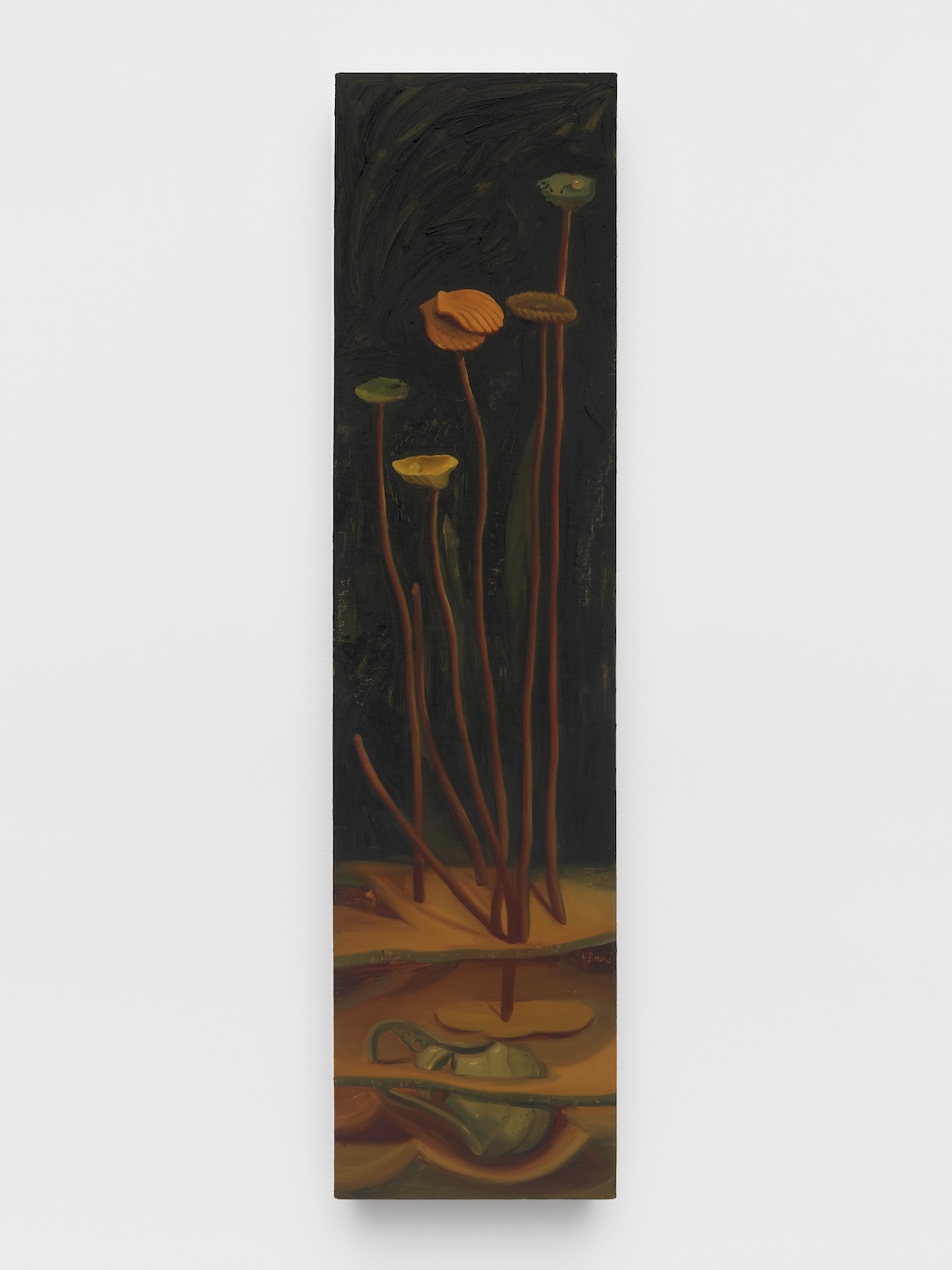 Dominique Fung, “Sprouting,” 2024, Oil on Canvas, 48 x 12 inches. Photo by Shark Sanesac. Courtesy of the artist and MASSIMODECARLO.
Dominique Fung, “Sprouting,” 2024, Oil on Canvas, 48 x 12 inches. Photo by Shark Sanesac. Courtesy of the artist and MASSIMODECARLO.
The Artist’s Meaningful Studio Routine
WW: Do you feel a sense of completion with your work?
DF: Yes, I’m like, it has to go now. I feel like they need to be purged out of my body and out of my studio.
WW: Aside from flipping through auction catalogs, what do you do in your studio? Do you have a routine?
DF: It depends on the project that I’m working on. Right now, I’m mostly doing sculptural work. That routine is different than the routine around my painted works. Primarily, when I get into the studio, I have my coffee, I have my electrolytes, I have three drinks lined up before I can do anything. I flip through books, read emails, and then I get into what I need to get done. My summer project was claywork. There were no paintings.
WW: How do you know when to commit yourself to sculpture versus painting?
DF: It’s a compulsion. I want to keep it fresh. I want to be excited and I want to challenge myself. I’m decently proficient in painting. I wanted to switch it up and crack the mold and maybe bring some of the new elements that I’m learning in sculpture back to painting. I’m also trying etching.
Pushing Personal Boundaries and Keeping Audiences Interested
WW: Last year, you had a milestone show at Massimo De Carlo in London. Are there any reflections you’d like to share?
DF: It probably had the most sculptures. It was definitely really challenging. It pushed the borders and parameters that I had set for myself. I was also really happy with the paintings in that show. I felt like it was really cohesive. Sometimes when you put on a show, there’s a painting that you wonder if it should be in there. I felt like my London show was edited well.
WW: Is there something about your practice that you wish people would take note of?
DF: My goal for my work is for people to stay on it. Our attention spans have been obliterated by social media. I try to put a lot of intricacies into the work so that it is playful and you can weave in and out of it. I want you to spend time with it. When I see someone who is able to stand in front of the work and really observe it, that is the most gratifying.
“When I see someone who is able to stand in front of the work and really observe it, that is the most gratifying,”
Dominique Fung
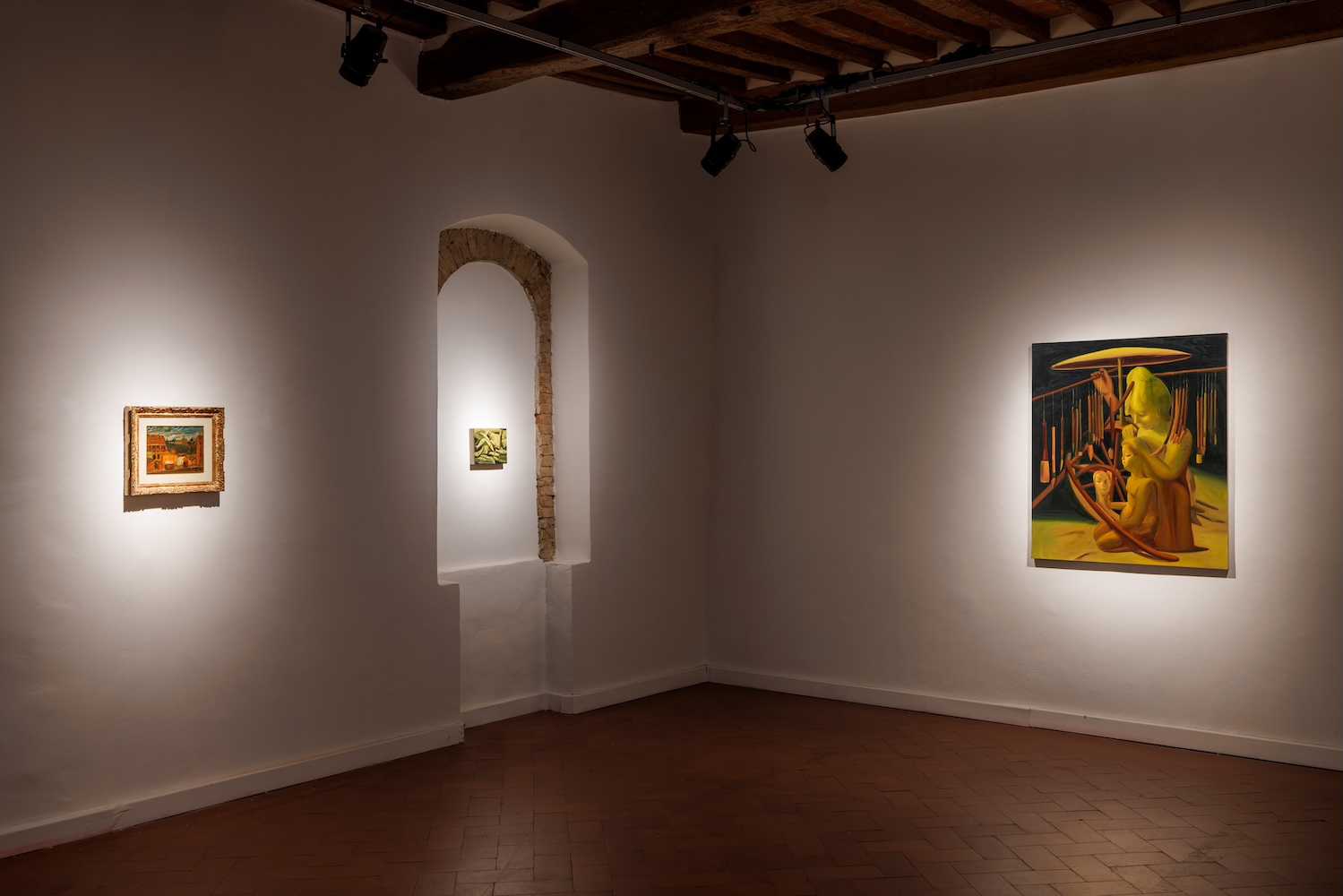 Installation view of Dominique Fung at Casa Masaccio, photo by Roberto Marossi.
Installation view of Dominique Fung at Casa Masaccio, photo by Roberto Marossi.
Profound Upcoming Shows and Aspirational Works
WW: What have you been working on recently?
DF: I am making one very large sculpture for The Armory Show in September for Jeffrey Deitch Gallery. It’s one piece. It’s a wet market stand. It’s a commentary on COVID, and how we discussed where the contagion comes from. “Wet market” is just a term. It represents the difference between dry goods and wet goods. Technically, all of our farmers markets in New York City are wet markets—but using “wet market” is a way to “other” another market.
I will be doing a solo exhibition with Massimo De Carlo for Art Basel Hong Kong. That will be my first show in Hong Kong, so it’s very meaningful. It’s where my family is from. I believe my whole family will come.
WW: What is your next aspirational exhibition or dream location?
DF: I would love to do more outdoor sculpture. I have a compulsion to make a sculpture that sits outside and experiences harsh weather. Because I love these antiquities that have been dug up from the ground, I think I want my art to experience that as well. I want to see the role that time plays.
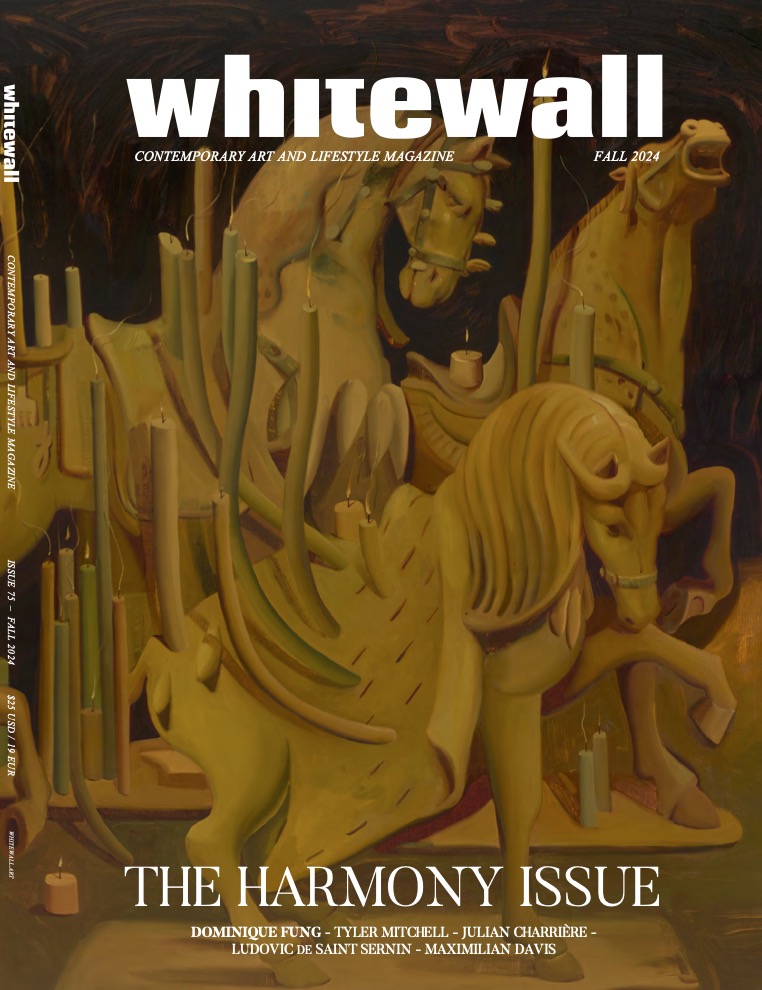 Dominique Fung’s Whitewall Cover.
Dominique Fung’s Whitewall Cover.






